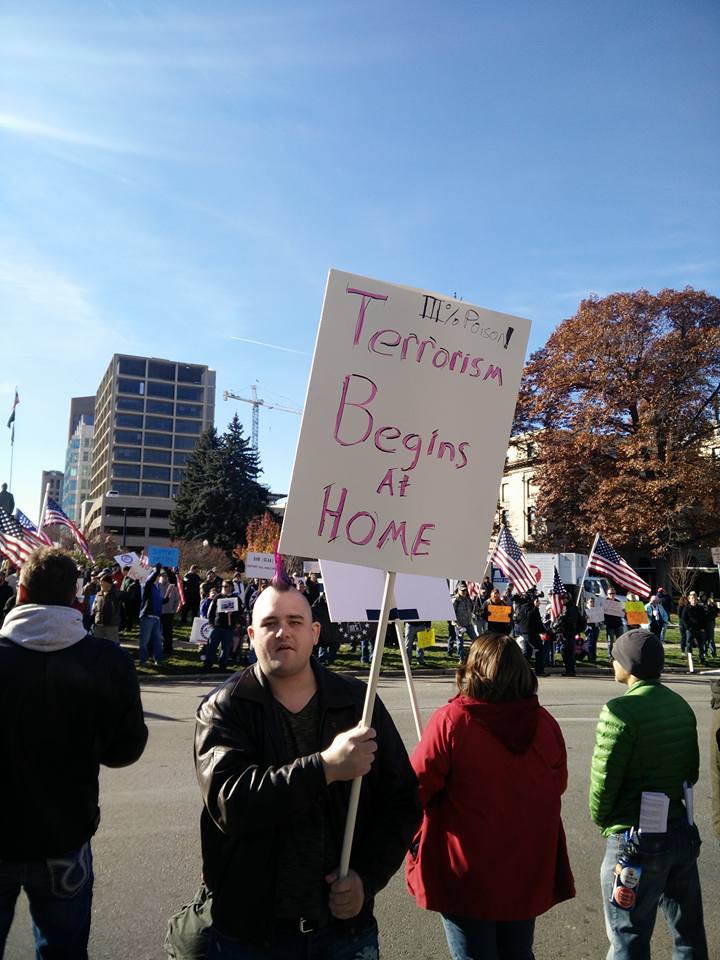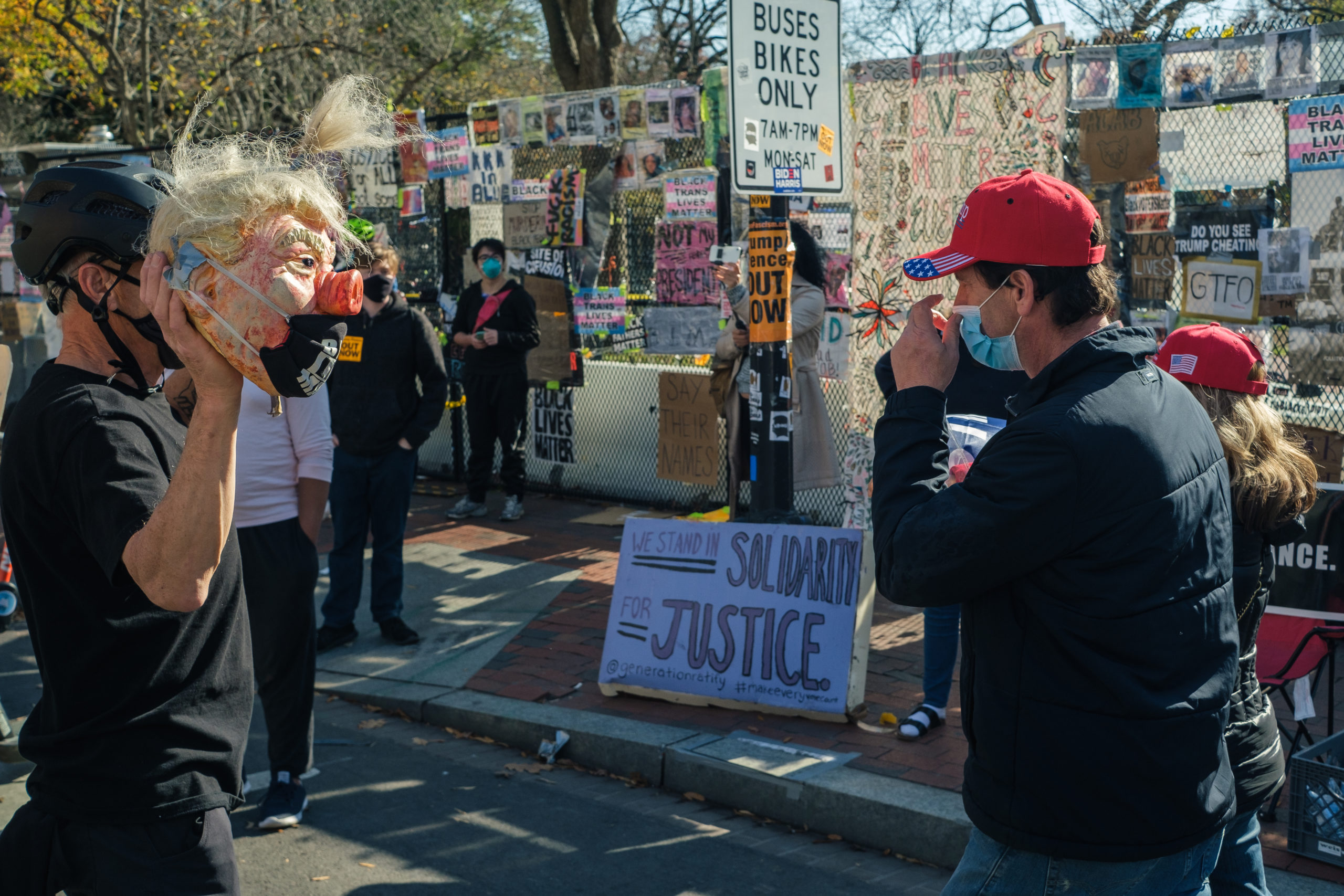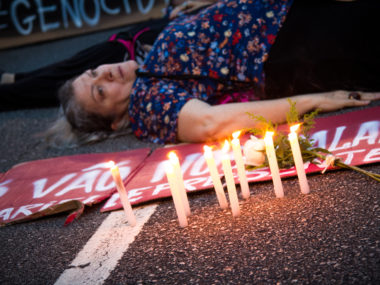Guest Post By Emily Kalah Gade for Denver Dialogues
I thank Anna Zelenz, Paige Sechrest and Vanessa Quince for their intellectual contributions to my thinking on these issues.
How does one become characterized as “radical”? Why are some people “counted” as violent extremists or terrorists while others, who may commit more violence, are not? In the wake of the violent events in Las Vegas, Charlottesville, and Orlando, these questions loom large in our national discourse. Scholars and media alike highlight the fact that white people are not called terrorists when they commit crimes for which Muslims or people of color would be considered terrorists. So we must understand: how are conceptions of militancy being constructed? I use “militant” here as a catch-all for the terms “terrorist”, “extremist” and “radical,” because unlike radical or extremist (any extreme view, not necessarily a violent one) and terrorism (often defined as tactic rather than a type of thought), the denoted definition of militancy is that one espouses violence as a means to accomplish one’s political goals.
Today, being labeled as militant means a host of things for one’s life and livelihood. We live in an era of surveillance and at a time when “security threats” are frequently used to justify the erosion of individuals rights, and when those erosions can occur before someone has committed any crimes. Consequently, understanding who is characterized as militant and a threat has important implications for personal security and for broader national policy alike. This would perhaps be fine if those who were considered militant were always those who were most threatening/posed the gravest risks, or if that conception neatly delineated and applied equally to all comers. Instead, these terms are casually spread through news and social media, and subjective understandings inform policy choices; not grounded in a crisp definition in the law.
Indeed, a recent study in the American Journal of Political Science interrogates how the public forms their opinions about whether an act is considered terrorism. The study finds that members of the American public determine who counts as a terrorist based on “subjective concerns about the perpetrator,” – including her identity and how the individual is framed in the media. This study highlights the looming question: regardless of which term you use, what is characterized as militant is a far from a precise calculation. The study confirms that the reasons some people get classified as militant (in the public sphere at least), while others don not, has much to do with identity politics.
In a working paper, Paige Sechrest, Vanessa Quince and I apply Charles Mills’ theory of a racial contract to combatancy categories.[1] We argue a set of rules or definitions can constitute a racial contract if (1) the rules appear on their face to be race neutral, but actually embody racialized norms; (2) allow those in the West to create rules that applicable to whites but not to people of color; and (3) lead to unequal exposure to violence along racial lines that they claim, on their face, to eschew. In our paper, we argue people considered “illegal combatants” (a category with fewer protections than those delineated in the Geneva Conventions – “combatant” and “non-combatant”) are not always those conducting the “worst” violence or violence outside the scope of the law. Rather, they are black and brown people who have been constructed as threats to the existing systems of (white) power, “justifying” the use of violence against them that would otherwise be prohibited by law.
In our frame, for violence to enter the system, a given group or individual must first be considered a threat. People’s perceptions of what is threatening centers on identity. Indeed, scholars Rousseau and Garcia-Retamero argue that other-ness is necessary for threat construction, while similarity and shared identity decrease the likelihood of individual perceiving another as a threat. The importance of race and racial categories in our self-identities and perceptions of others make race an axis on which threat is frequently defined. We argue this is far from the only case in which Mill’s racial contact is an apt framework in which to conceptualize domestic and international definitions and categories.
I believe the conception of “militancy” in the United States is another. Militancy as a category is cast as “race neutral” but deeply embedded with racialized cultural conceptions. Conceptions of militancy allow members of the US population (and government?) to create and apply rules to people of color that don’t apply to whites. And finally, conceptions of militancy lead to a greater exposure of people of color to state use of force as a result of the slanted conception of who is considered “threatening” in the first place.
We see plausible support for this theory in broad strokes of what kinds of acts are even talked about in relation to “extremism” or “terror.” While wife battery, suicide or the more common example of mass shootings can arguably be both politically motivated and violent, these actions are not considered radical, extremism or examples of terrorism.[2] They are part of the private domain, or simply considered tragedy, and rather than a threat to the state. In contrast, some nonviolent movements organized for and by people of color, such as Black Lives Matter, are inaccurately described as terrorist organizations, or conflated with/lumped into violent movements to which they are unrelated. I am currently engaged in interrogating this nest of questions more formally in a mixed-method project with Anna Zelenz.
It goes without saying that terrorism is abhorrent. But, the implications of viewing conceptions of “militant” as a racial contract are broad reaching. Our country is currently engaged in a fight over the soul of freedom and is actively delineating what sort of society we plan to be. Is freedom to be measured in the freedom to live (and exclude) based on one’s religious beliefs, or the freedom to be employed regardless of your sexual orientation? Acknowledging the racialized nature of our conceptions of what and who constitutes a threat to that fundamental underpinning of American ideal is critical to this broader conversation, and to our chances of moving towards a safer society in the future.
Emily Kalah Gade is a visiting post-doc at the Sie Center, and post-doctoral researcher at University of Washington.
[1] It was Paige Sechrest’s idea to apply Mills in this way.
[2] I thank Anna Zelenz for this point.







